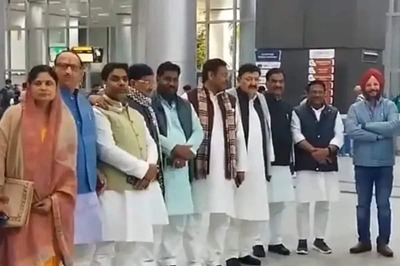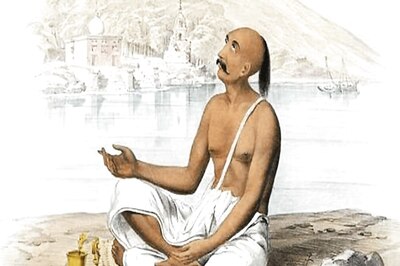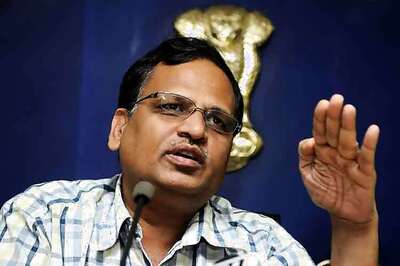
views
If constitutionalism is the bedrock of a republican state, political parties are the linchpin of democracy. When India became independent it opted for the universal adult franchise; meaning every adult, without any distinction of caste, creed, religion, or economic status would participate in the democratic functioning of the state.
The people were vested with the power of electing their representatives who in turn would form the government. The mobilization of this power vested with the people was to be made through political parties of different ideological hues. Apart from the ideology, which categorizes parties into left, right, and center, another criterion of differentiation was the classification of parties into recognized and unrecognized parties.
Recognized parties were further classified into two categories; ‘National’ and ‘State’ parties, based on their electoral performance.
‘Sabsi Badi Party’; not to be confused with the ruling Bhartiya Janta Party (BJP) was among the 2,300 political parties registered with the Election Commission of India (ECI) at the time of the 2019 Lok Sabha elections. The sheer number of political parties would have perplexed anyone not well-acquainted with the nature of Indian polity.
But those who understand the play of power politics would know that less than 50 of these 2,300 parties would have a say in the election outcome. These are the parties that are recognized by the ECI as ‘National’ and ‘State’ parties. So, when on Monday ECI accorded the National party status to the Aam Aadmi Party (AAP) while withdrawing the same status from the Trinamool Congress (TMC), Communist Party of India (CPI), and the Nationalist Congress Party (NCP), it made headlines.
According to the ECI, NCP, and Trinamool Congress will be recognized as State parties in Nagaland and Meghalaya respectively based on their performance in the recently concluded Assembly elections.
During the first general election held in 1952, India had 14 National parties which came down to seven during the 17th Lok Sabha elections. In June 2019, National People’s Party (NPP) was given National party status which brought the total number of National parties to eight.
There are several parameters that a political party needs to qualify to be recognized as a National or a State party.
Conditions for Recognition as a State Party
- If it secures 6 per cent of the valid votes polled in the state at a general election to the Legislative Assembly of the state concerned, and, in addition, it wins 2 seats in the assembly of the state concerned; or
- If it secures 6 per cent of the valid votes polled in the state at a general election to the Lok Sabha from the state concerned and in addition wins 1 seat in the Lok Sabha from the state concerned; or
- If it wins 3 per cent of seats in the Legislative Assembly at a general election to the Legislative Assembly of the state concerned or 3 seats in the Legislative Assembly; whichever is more; or
- If it wins 1 seat in the Lok Sabha for every 25 seats or any fraction thereof allotted to the state at a general election in Lok Sabha from the state concerned; or
- If it secures 8 per cent of the total valid votes polled in the state at a General Election to the Lok Sabha from the state or to the Legislative Assembly of the state. This condition was added in 2011.
Conditions for Recognition as a National Party
- If it secures 6 per cent of valid votes polled in any four or more states at a general election to the Lok Sabha or to the Legislative Assembly; and, in addition, it wins four seats in the Lok Sabha from any state or states.
- If it wins 2% (11 seats) of seats in the Lok Sabha at a general election, and these candidates are elected from three states.
- If it is recognized as a state party in 4 states.
How AAP got Recognized as a National Party
AAP fulfills the first criteria for being recognized as a National party that is listed above. AAP has a ruling majority in two states – Delhi and Punjab – which means that it has a larger chunk of the vote share in these two states.
Arvind Kejriwal-led party has already been recognized as a state party in Delhi, Punjab, Goa and Gujarat, fulfilling one of the eligibility conditions to become the national party #BreakingNews #AAP #ArvindKejriwal #TMC #NationlParty https://t.co/l31J2Ysptz pic.twitter.com/DEnqpRUPXC— News18 (@CNNnews18) April 10, 2023
Apart from this, it got 6.77 per cent of the total votes polled in the Goa Legislative Assembly elections held in the month of March last year.
What it needed was more than six per cent of the total votes polled in one more state election, to bag the coveted National party status. It reached the finishing line by getting 13 per cent of votes in the Gujarat elections held in December last year.
Change in rule in 2016
It is important to recall that in 2016, BSP, CPI, and NCP were to lose their National Party status after their poor show in the 2014 Lok Sabha elections. However, following a change in the rule effectuated by the ECI, they were successful in saving their National party status.
ECI in the year 2016 amended its review norms to allow for a review of a political party’s recognition after two consecutive polls rather than the five-year assessments, which was a prevalent norm at that time.
BSP would have lost its status in 2016 along with other parties notwithstanding the change in the rule. However, because of the change in the rule and the fact that in several state elections held after 2016, it got the required vote share to retain its national party status, it is still on the coveted list.
Apart from BSP in 2016, the TMC, CPI, and the NCP also benefitted from the change in the poll panel’s rule, but as pointed out by ECI in its statement derecognizing these parties on Monday in spite of “sufficient opportunity of two Parliamentary elections and 21 State Assembly Elections” they could not perform to retain the National party status.
Total number of National Parties
Now, with the AAP getting the National Party status and TMC, CPI, and the NCP being derecognized, the number of National Parties stands at 6 which includes BJP, Congress, CPI(M), Bahujan Samaj Party (BSP), National People’s Party (NPP) and the AAP.
Perks and privileges of being a National party
Apart from the political status, being recognized as a National party accords certain privileges to the parties like being allowed to retain a single and permanent election symbol across all states, free campaign slots on national broadcasters during elections, and the right to a party office in New Delhi.
Read all the Latest Explainers here


















Comments
0 comment